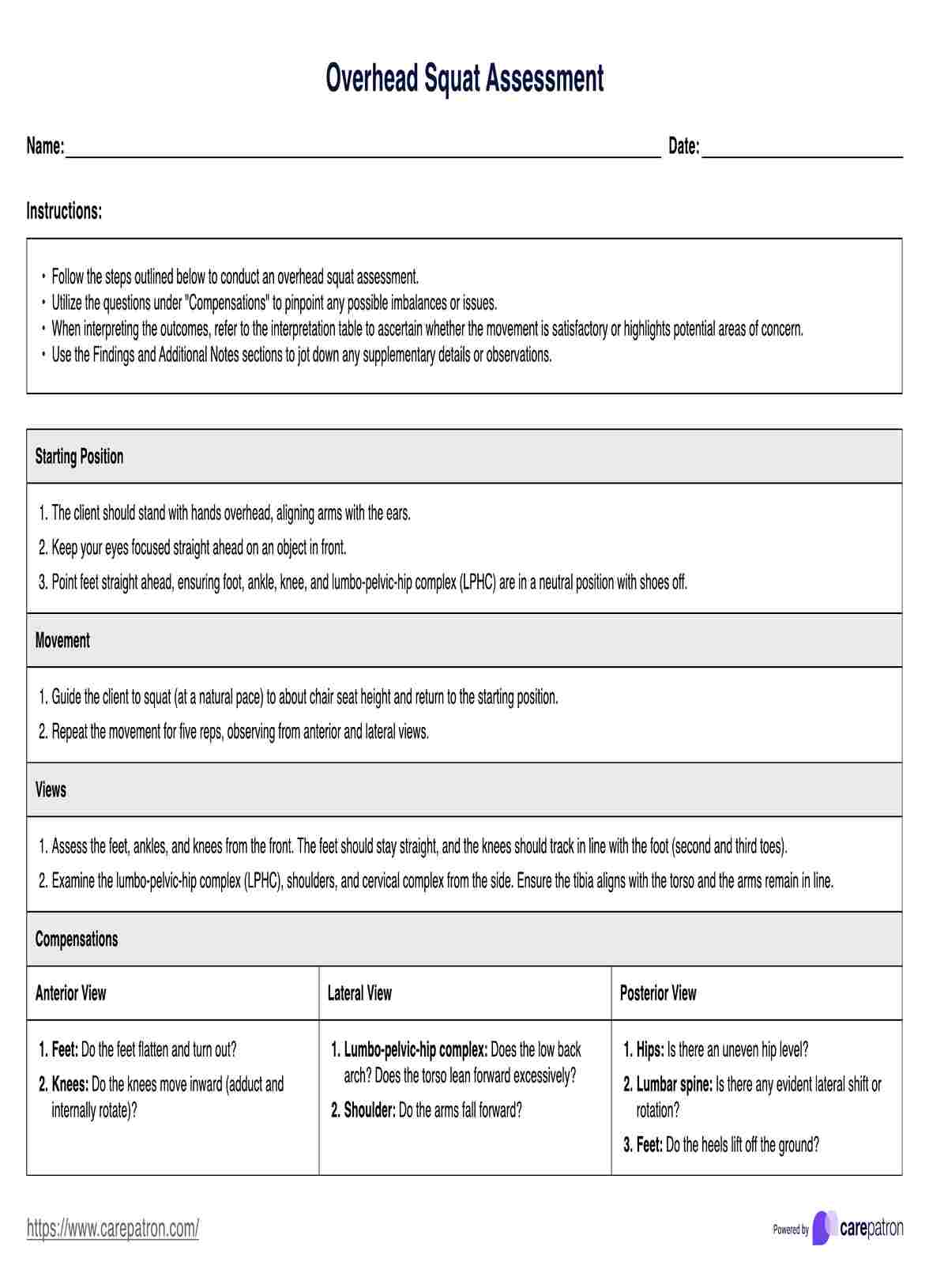The overhead squat assessment helps personal trainers identify any imbalances or dysfunctions in their clients' movement patterns. This information can be used to design personalized training programs and prevent injuries.

Overhead Squat Assessment
Get access to a free Overhead Squat Assessment template. Learn how to perform this test and interpret the results.
Use Template
Overhead Squat Assessment Template
Commonly asked questions
Mobility restrictions, muscle imbalances, and poor posture are common issues identified through an overhead squat assessment. These issues can lead to decreased performance, increased risk of injury, and compensation patterns in movement.
While the overhead squat is a basic movement pattern, it requires some mobility and stability. Individuals with severe mobility restrictions or injuries may be unable to perform this assessment safely.
EHR and practice management software
Get started for free
*No credit card required
Free
$0/usd
Unlimited clients
Telehealth
1GB of storage
Client portal text
Automated billing and online payments











